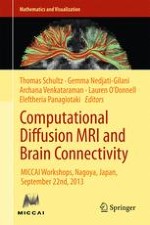2014 | OriginalPaper | Buchkapitel
Rich Club Analysis of Structural Brain Connectivity at 7 Tesla Versus 3 Tesla
verfasst von : Emily L. Dennis, Liang Zhan, Neda Jahanshad, Bryon A. Mueller, Yan Jin, Christophe Lenglet, Essa Yacoub, Guillermo Sapiro, Kamil Ugurbil, Noam Harel, Arthur W. Toga, Kelvin O. Lim, Paul M. Thompson
Erschienen in: Computational Diffusion MRI and Brain Connectivity
Aktivieren Sie unsere intelligente Suche, um passende Fachinhalte oder Patente zu finden.
Wählen Sie Textabschnitte aus um mit Künstlicher Intelligenz passenden Patente zu finden. powered by
Markieren Sie Textabschnitte, um KI-gestützt weitere passende Inhalte zu finden. powered by
